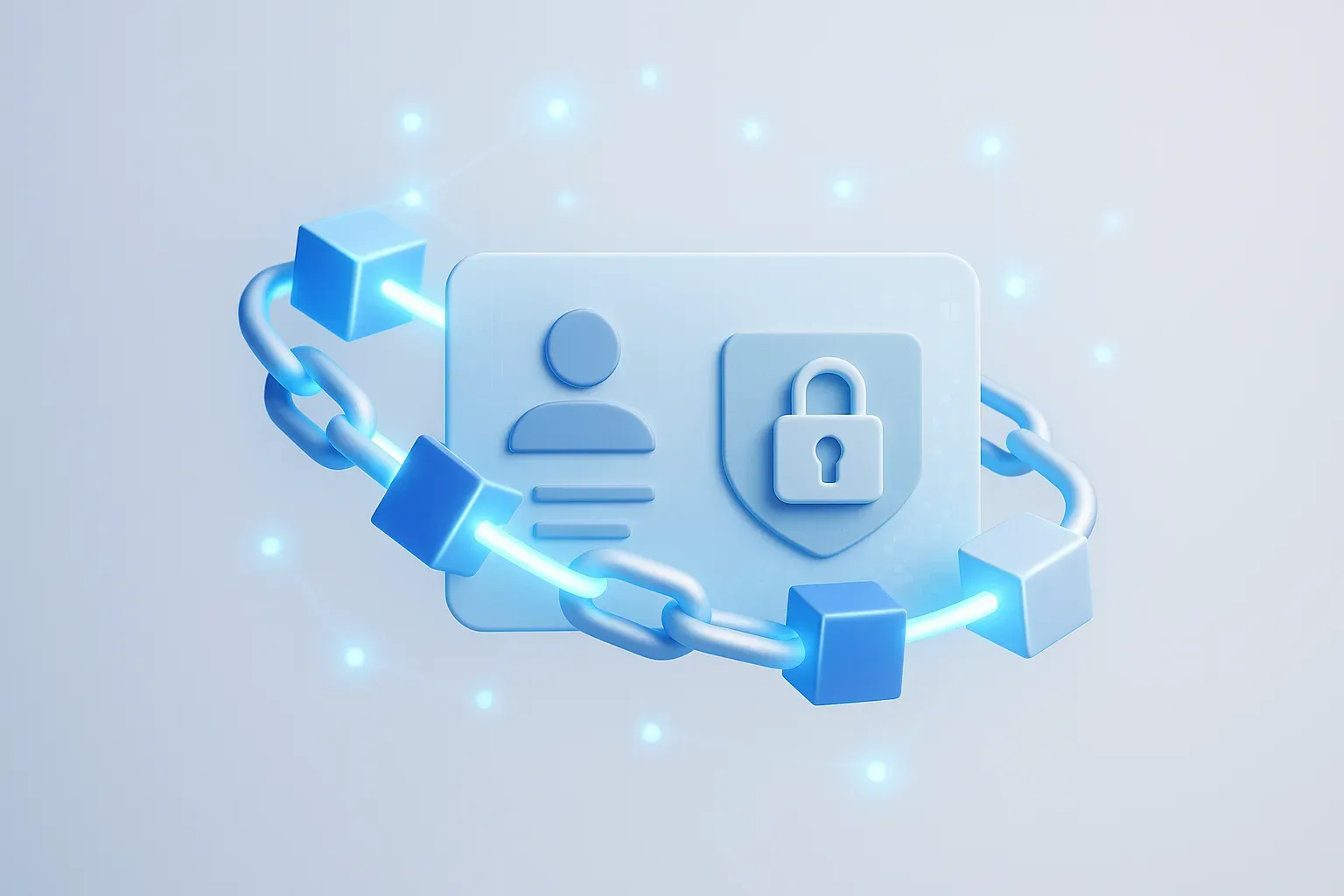Data privacy regulations are evolving rapidly across the globe, presenting challenges for businesses operating internationally. This article unveils essential best practices for managing global data privacy, drawing from insights provided by industry experts. These strategies offer practical approaches to ensure compliance while maintaining operational efficiency.
- Integrate Privacy by Design in Development
- Embed Privacy into Product Management
- Treat Data Privacy as User Experience
- Implement Privacy Zoning Protocols
- Conduct Quarterly Data Audits
- Tie Compliance to Business Workflows
- Apply Least Privilege Access Control
- Incorporate Privacy Sprints in Development
- Document Data Collection and Consent
- Adopt Privacy-by-Design with Localization Layer
- Prioritize Thorough Documentation Over Complex Software
- Pursue Relevant Data Security Certifications
- Implement Data Minimization from Start
- Adopt ISO 27701 for Privacy Management
- Partner with Compliant Service Providers
- Apply Strictest Global Regulations Universally
Integrate Privacy by Design in Development
At our AI solutions firm, we build compliance with global data protection laws into our development life cycle. We don’t treat this as an after-release issue – it starts at the design board. For example, while building a custom machine learning model for a client in the healthcare sector, we implemented the GDPR’s “privacy by design and by default” (Article 25), which is the idea of integrating data protection measures into the design of our systems from the start. That encompassed data anonymization, access tiering, and expiry policies based on the user’s consent.
One good practice we adhere to is the completion of Data Protection Impact Assessments (DPIAs) in the early stages of the project, including for AI models that deal with sensitive or high-risk data. In one example, this may have revealed a threat around data inference within a customer feedback classifier. We were able to minimize it by retuning our training pipeline to not include low-confidence data clusters, retraining with only consent-backed data.
 John Pennypacker
John Pennypacker
VP of Marketing & Sales, Deep Cognition
Embed Privacy into Product Management
Navigating global data privacy isn’t just about staying compliant—it’s about earning trust. At Edumentors, we serve families across the UK, EU, and Gulf, so we had to build privacy into our system from day one. Rather than chasing regulations reactively, we integrated GDPR principles into our product design itself. One practice that’s proven essential is assigning data compliance ownership to product managers. This keeps accountability close to the point of execution. It’s made our response time faster and prevented costly oversights. If I’ve learned anything, it’s this: privacy is a product feature, not a legal checkbox.
 Tornike Asatiani
Tornike Asatiani
CEO, Edumentors
Treat Data Privacy as User Experience
We navigate the intricate landscape of global data privacy regulations by embedding a ‘privacy by design’ philosophy into our core operations. Our most effective best practice is to treat data privacy not as a compliance checklist, but as a fundamental component of the user experience. From the initial concept of a new product, our development, legal, and marketing teams collaborate to ensure that principles of data minimization and transparency are woven into the very fabric of our technology. This proactive approach means we’re not just reacting to regulations like GDPR or CCPA; we’re building a foundation of trust with our users, which in today’s digital economy, is the ultimate competitive advantage.
 Neeraj Kumar
Neeraj Kumar
Sme-Health, Tobi
Implement Privacy Zoning Protocols
We employ a method called “Privacy Zoning Protocols” to navigate global data privacy laws across client campaigns. Instead of applying one blanket policy, we segment data collection and usage rules by region, platform, and ad type—each with its own compliance “zone” integrated into the workflow.
For example, when launching a multi-country campaign, our intake checklist outlines which assets involve PII, which region’s laws apply (GDPR, CCPA, LGPD), and what consent layer is required. This zoning ensures our team knows exactly which parts of a campaign need double opt-in, or zero data storage. It minimizes legal exposure without impeding the creative process.
One best practice we follow is embedding compliance flags directly into project management tools like Asana. Thus, if a creative requests personal data usage in a Facebook ad, it automatically triggers a review from our compliance lead. This approach is low-friction but keeps our campaigns aligned with global regulations—by design, rather than as an afterthought.
 Brandon George
Brandon George
Director of Demand Generation & Content, Thrive Internet Marketing Agency
Conduct Quarterly Data Audits
Compliance isn’t just about avoiding fines—it’s about earning trust at scale.
To stay aligned with global data privacy regulations like GDPR and CCPA, we built privacy into our workflows from day one. One best practice that has worked for us is conducting a quarterly data audit across all platforms. This audit flags where data is stored, who has access, and whether it still needs to be kept. It’s a habit that keeps us nimble as laws evolve—and reassures clients that we take their data seriously.
I’m David Quintero, CEO of NewswireJet. For a PR agency handling sensitive client information, proactive compliance isn’t optional—it’s a competitive advantage.
 David Quintero
David Quintero
CEO and Founder, NewswireJet
Tie Compliance to Business Workflows
Usually, the hard part isn’t understanding the laws. It is making them real. GDPR, CCPA, HIPAA, CPRA – compliance always looks manageable in policy documents. But things get complicated when marketing is trying to launch a new campaign, engineering is shipping fast, and legal is the last to know. The truth is, privacy compliance doesn’t fall apart because people don’t care. It falls apart when it’s treated like someone else’s job.
I still remember a feature release where a product manager wanted to capture user behavior data for A/B testing. It sounded harmless. No one flagged it – until an engineer who had gone through our internal privacy enablement session asked, “Are we logging user IPs? Are we routing this through a US-based processor?” That one question forced us to reroute data flows and update our vendor contracts. It also prevented a potential privacy breach under CCPA. What stood out to me wasn’t the legal nuance – it was the fact that someone outside of legal caught it first. That’s what scalable compliance looks like.
So, what’s one best practice? Here’s what we’ve seen work consistently with our customers: tie compliance to business workflows, not policy binders. One customer managing privacy across multiple US states used our platform to build a real-time map of where their customer data lived, who had access, and which laws applied. Anytime a new vendor was onboarded, our platform flagged missing DPAs or cross-border transfer risks. Data deletion timelines were tied to retention schedules and consent status. No manual tracking. No late-night spreadsheet panic before an audit. Just clear accountability, built into the way work gets done.
Compliance doesn’t fail because people break rules. It fails when systems don’t surface the right questions early. If you want privacy programs to work, put the rules where the decisions happen.
 Akshay Venkatachalam
Akshay Venkatachalam
Director of Growth, TrustCloud Corporation
Apply Least Privilege Access Control
Navigating global data privacy regulations is a critical aspect of our operations at Fulfill.com. When you’re connecting thousands of eCommerce businesses with 3PL partners, you’re handling sensitive data about order volumes, customer information, and business operations across multiple jurisdictions.
From day one, we’ve designed our systems with privacy regulations like GDPR and CCPA in mind. Our architecture supports data minimization and purpose limitation principles, ensuring we only collect and process what’s necessary for matching eCommerce companies with the right fulfillment partners. This privacy-by-design approach has saved us countless headaches as new regulations have emerged.
One best practice I’d recommend is implementing least privilege access control throughout your organization. In our early days, we made the mistake of having overly broad data access protocols. After a close call with a potential compliance issue, we restructured our entire approach. Now, team members only access the specific data elements they need for their role, significantly reducing risk exposure while improving our ability to demonstrate compliance during audits.
When working with international 3PL partners, we’ve learned that privacy compliance isn’t one-size-fits-all. Each region interprets regulations differently, and staying ahead requires both technology solutions and human expertise. We’ve built a network of compliance specialists who keep us updated on regional nuances, which has been invaluable as we’ve expanded globally.
Remember that compliance isn’t just about avoiding penalties—it’s about building trust. Our eCommerce clients need absolute confidence that their customer data is handled properly throughout the fulfillment chain. By making privacy protection a cornerstone of our matching process, we’ve turned compliance from a challenge into a competitive advantage.
 Joe Spisak
Joe Spisak
CEO, Fulfill.com
Incorporate Privacy Sprints in Development
When it comes to following global data privacy laws, the first step is to make privacy a part of every step of software development instead of just checking it off at the end. One approach that has worked very well is to have “privacy sprints” during the product lifecycle.
We conduct micro-sessions in addition to regular development sprints. These micro-sessions focus solely on identifying potential data risks, mapping data flows, and ensuring compliance with laws in each region, such as GDPR, CCPA, or PDPA. These privacy sprints include developers, lawyers, and even marketing teams to identify problems early on, such as collecting unnecessary data or using third-party integrations that aren’t secure.
This proactive approach reduces the likelihood of costly rework later and creates a culture where compliance is not just a legal requirement but part of the team’s mindset. Pairing this with automated tools for data classification and consent management ensures adherence at scale without impeding innovation.
 Vikrant Bhalodia
Vikrant Bhalodia
Head of Marketing & People Ops, WeblineIndia
Document Data Collection and Consent
At our marketing firm, compliance isn’t theoretical; it’s something we routinely navigate as part of every campaign we run for clients. For example, one of our HVAC clients had to consider U.S. state-level regulations and GDPR for their European expansion while running geo-targeted lead generation ads. We ensured our lead forms complied with the GDPR’s Article 7 on “Consent Conditions,” including visible opt-in language versus default pre-selected checkboxes and granular options such as communication preferences (SMS, email, calls).
More concretely, we integrated a CMP into the client-designed landing pages. Additionally, this ensured different data rights messaging for American and European users based on IP address. Our setup was not only a showpiece, but the client’s counsel screened it as “fully aligned” with cross-border requirements during a routine audit, which I believe enhanced confidence.
Here’s a rule of thumb we’ve found particularly helpful: every piece of data should correlate with something you’ve documented. As long as people filled out our “Request a Service Call” form, we didn’t just gather email addresses; we took note of when, how, and why they agreed. That transparency absolutely gives the HVAC client a competitive edge, and this is especially the case at a time when privacy is a tool, not just a regulation.
 Aaron Whittaker
Aaron Whittaker
VP of Demand Generation & Marketing, Thrive Internet Marketing Agency
Adopt Privacy-by-Design with Localization Layer
At Hypervibe, we approach data privacy the same way we approach wellness tech: as a dynamic system, not a static checklist. With users and partners spanning multiple continents, our compliance model is built to adapt, not just comply.
How do we navigate global privacy regulations?
We use a “Privacy-by-Design + Localization Layer” framework. Everything from how we collect data to how we engage users is designed around minimization, transparency, and consent. On top of that, we’ve built geo-fenced logic into our tech stack, so regional rules like GDPR, CCPA, or LGPD auto-trigger based on user location. Cookie banners, opt-ins, and data flows dynamically adjust in real time.
We bucket data into three categories:
1. Essential: Device and service-critical data
2. Functional: Personalization and support-related data
3. Optional: Marketing and analytics data
Each layer has its own encryption standard, retention policy, and user control settings. This approach keeps internal teams nimble without compromising compliance and gives users clear control over what they’re sharing.
As a remote-first, globally distributed company, we also run micro privacy trainings—short, scenario-based modules tailored to each team’s data touchpoints. This method is efficient, timezone-friendly, and builds a culture of proactive privacy.
 Murray Seaton
Murray Seaton
Founder and CEO / Health & Fitness Entrepreneur, Hypervibe (Vibration Plates)
Prioritize Thorough Documentation Over Complex Software
Documentation systems protect small businesses more effectively than complex compliance software when handling customer data privacy requirements. As a business owner managing sensitive customer information, I’ve found that thorough record-keeping of data handling practices provides better protection than expensive compliance tools designed for larger organizations.
My most effective practice involves maintaining detailed logs of who accesses customer information, when data is collected, and how long we retain different types of information. This documentation approach allows us to respond quickly to customer privacy requests while demonstrating good faith compliance efforts if questions arise about our data practices.
The breakthrough was treating data privacy like quality control rather than legal compliance—creating systematic procedures that protect customer trust while covering our business liability. I implemented simple spreadsheet tracking for data collection, storage, and deletion that costs nothing but provides comprehensive audit trails. This approach proves much more practical than enterprise software that requires technical expertise we don’t have.
My advice for other small business owners: focus on consistent documentation rather than perfect compliance technology. Most privacy regulations reward businesses that demonstrate systematic efforts to protect customer data rather than requiring sophisticated technical solutions. Create simple systems you’ll actually use consistently rather than complex procedures you’ll skip during busy periods. Good documentation habits provide both customer protection and business liability coverage without requiring specialized legal or technical knowledge.
 Aleksa Marjanovic
Aleksa Marjanovic
Founder and Marketing Director, Eternal Jewellery
Pursue Relevant Data Security Certifications
We’ve pursued certifications like ISO 9001, ISO 27001, and HITRUST to ensure we’re covered in everything from quality management to clinical data security. TransPerfect Life Sciences helps pharmaceutical and biotechnology clients navigate complex global compliance – but we must meet those same high standards ourselves.
We always encourage customers to embed data protection measures early in their workflows, such as automated PII redaction, limited access controls, and encryption by default. This keeps them ahead of evolving regulations like GDPR and HIPAA while maintaining operational efficiency.
 William Mellinger
William Mellinger
Director, TransPerfect Life Sciences
Implement Data Minimization from Start
COLLECT ONLY WHAT YOU NEED, PROTECT WHAT YOU COLLECT – When you minimize data collection to business essentials, compliance becomes simpler while building stronger trust relationships with the people whose information you manage.
IMPLEMENT DATA MINIMIZATION PRINCIPLES FROM DAY ONE, NOT AS A COMPLIANCE AFTERTHOUGHT – This proactive approach has simplified our regulatory adherence while actually improving our client relationships at SCOPE.
When building our recruiting database, I learned that collecting excessive candidate information creates compliance nightmares across different jurisdictions. Instead of gathering every possible data point, we only collect information directly relevant to placement success – professional background, salary expectations, and career goals – while avoiding personal details that add regulatory complexity without business value.
This minimization strategy simplified our compliance framework significantly because we don’t store sensitive data that triggers complex privacy requirements. When candidates ask about data usage, we can honestly explain that we only maintain professionally relevant information needed for successful placements, which builds trust rather than creating privacy concerns.
The business benefits exceeded compliance advantages. Streamlined data collection improved our intake process efficiency, reduced storage costs, and eliminated the administrative burden of managing unnecessary information. Candidates appreciate our focused approach because they’re sharing relevant professional details rather than filling out lengthy forms with personal information.
We also implemented automatic data purging for completed placements older than three years, ensuring our database stays current and compliant without manual oversight.
 Friddy Hoegener
Friddy Hoegener
Co-Founder | Head of Recruiting, SCOPE Recruiting
Adopt ISO 27701 for Privacy Management
One effective way companies navigate global data privacy regulations is by adopting ISO 27701, an auditable international standard that extends ISO 27001 to cover privacy-specific requirements and controls.
The standard provides a structured, scalable framework for managing privacy controls, making it easier to align with multiple regulations from different geographical locations. By using ISO 27701, organizations can systematically identify which controls apply to each jurisdiction and integrate them into a unified privacy program.
Using ISO 27701 certification as the foundation for your privacy program not only simplifies compliance across geographies but also assures stakeholders through third-party audits and structured documentation of privacy practices.
 Tom Rozen
Tom Rozen
Managing Director, GRSee Consulting
Partner with Compliant Service Providers
While our self-storage facility operates locally, we still take data privacy seriously, especially as more of our customer interactions happen online. Even though we aren’t navigating global compliance requirements like a multinational company might, we align with broader best practices that support strong data protection and trust.
One key practice we follow is working exclusively with third-party service providers that are compliant with major data security standards, where applicable. This helps ensure that any customer information we handle is stored and transmitted securely, even if we’re not directly subject to international laws ourselves.
Additionally, we regularly review our data handling processes, especially around online rentals and billing. We keep things transparent for customers and limit access to sensitive data within our team. The goal is to build trust through clear communication, secure systems, and a culture that treats customer data with care, regardless of geography.
 John Reese
John Reese
Owner, Elite Self Storage
Apply Strictest Global Regulations Universally
As a website that operates globally, we keep our eye on our data privacy compliance. Because it would not be cost-effective to have different behaviors for different countries, we simply choose the most restrictive regulation and apply it globally. For a while now, that has been the European GDPR (General Data Protection Regulation, implemented in 2018).
Even the most privacy-protective country, Switzerland, lags behind the European Union and implemented a very similar regulation to GDPR, called nFADP, five years later.
The United States, on the other hand, has always been pro-business and regulates as little as possible. This is a trend that, with the latest administration and their cuts to the FTC (Federal Trade Commission/Bureau of Consumer Protection), is unlikely to change.
 Jan Procházka
Jan Procházka
Product Expert, Vefru













